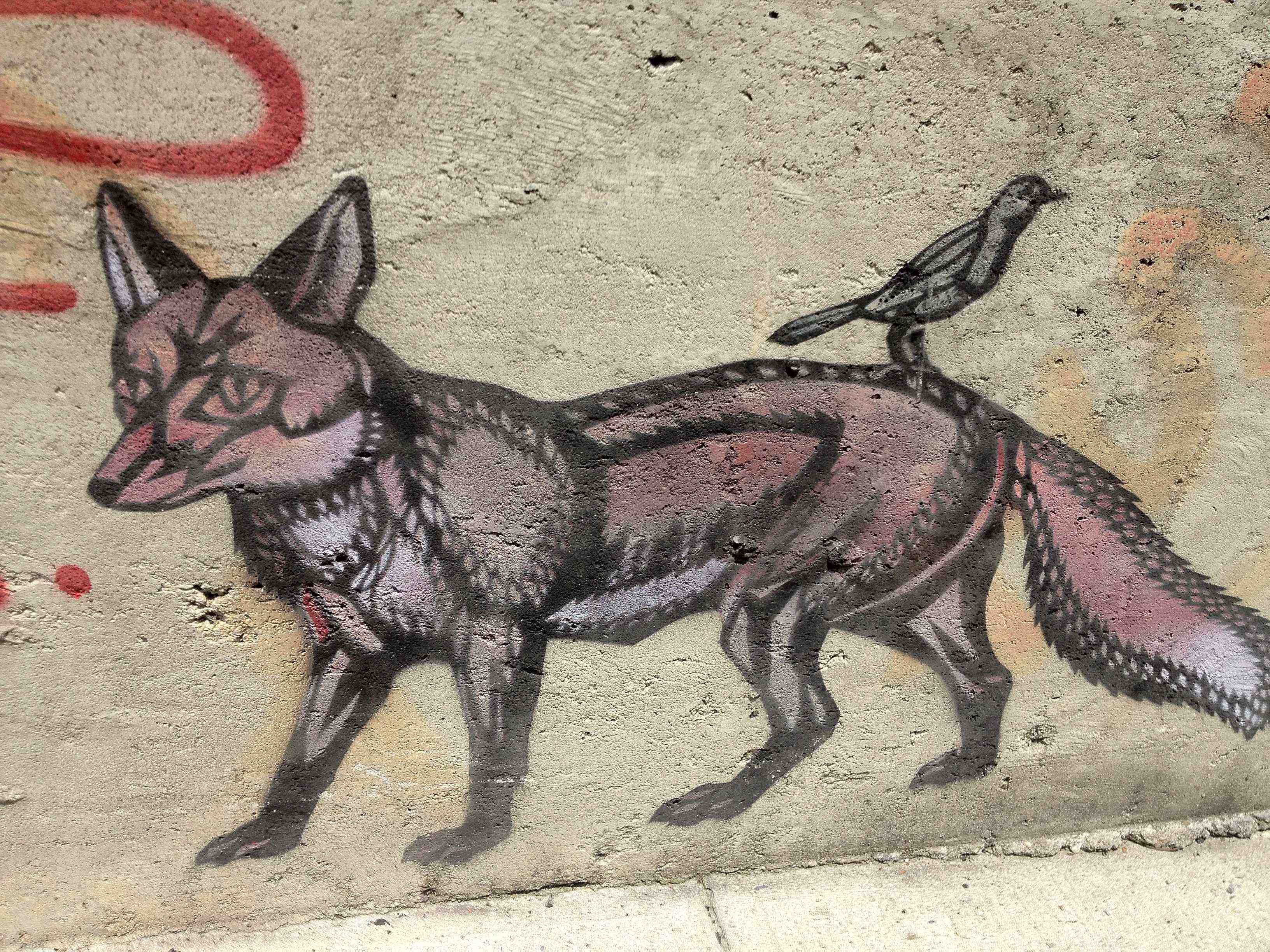Tracking Coyote, From Trickster to Varmint and Back Again

Use this site to trace coyote’s journey across time and history.
Our story begins in the La Brea Tarpits. While the Tarpits and the corresponding museum are best known for compelling fossils of saber-tooth cats, mastodons, and ground sloths, researchers have also found coyote skeletons and the partial remains of one woman. In this sense, human association with the animal we know today as Canis latrans (or barking dog) dates back over 10,000 years.
While the megafauna died off in the late-Pleistocene extinction, coyote endured and prospered, as did human beings. In the pre-colonial Americas, coyotes were incorporated into martial imagery, and Native Americans told myths with coyote as the iconic trickster. Coyote–and its larger cousin, the wolf–were transformed into varmints, as the ranching industry expanded in the 19th century. A bounty system was put in place, and coyotes were trapped, poisoned, shot, and hunted with dogs. Despite these efforts, coyote expanded its range, and today we find coyotes across North America in wilderness areas, suburban backyards, and even in city centers.
Come explore this fascinating figure, and its journey from trickster to varmint and back again.